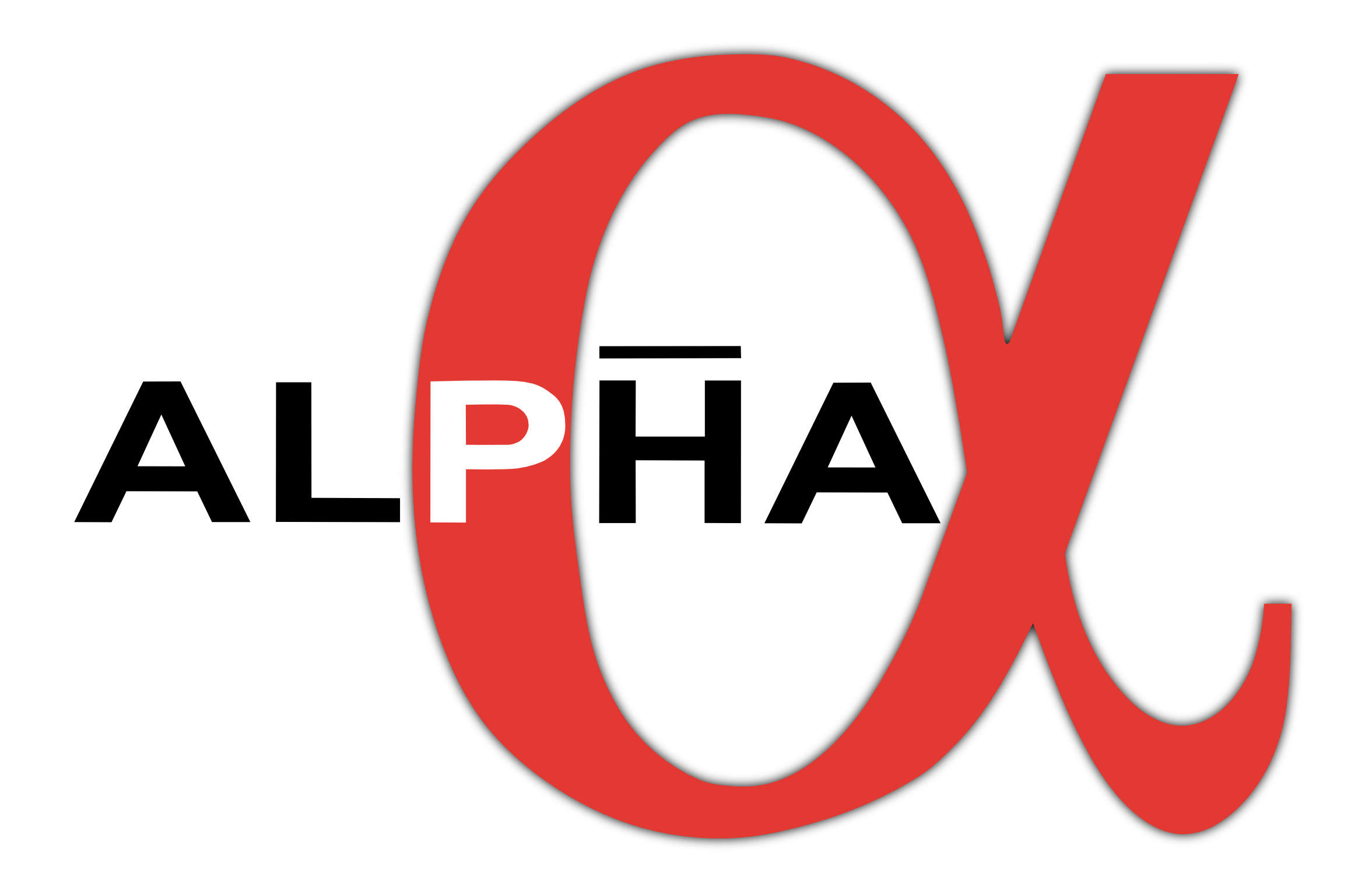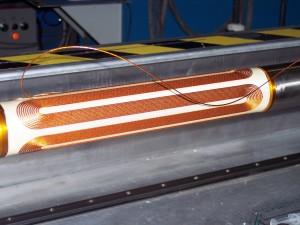The atom trap, or also called magnetic trap, traps and holds the antihydrogen atoms.
The ALPHA magnetic trap is a variant of the a type of atom trap called an 'Ioffe trap'.
Such traps work because most atoms interact with a magnetic field through a property called their magnetic dipole moment. If the atom is moving in a magnetic field, it will gain and lose energy as the strength of the magnetic field near the atom changes. Making a magnetic field that increases in all directions from a central minimum point means that some atoms will gain potential energy and lose kinetic energy if they move away from the minimum. Atoms that have low enough total energy will convert all of their kinetic energy to potential energy and be reflected from higher magnetic field and be trapped. You can think of this like a marble rolling in a bowl -- a slow moving marble can't reach the edge of the bowl and will be `trapped' in the bowl.
To produce a magnetic field that has a minimum like this requires specially designed magnets. In one direction, we use 'mirror coils' (that look just like short solenoids) that increase the field nearby to make two `walls'. In the direction perpendicular to this, we need a more complicated multipole magnet. This magnet is made up of a number of wires spaced around a cylinder, where the current in each wire flows in the opposite direction to each of its neighbours. Depending on how many wires there are, you can get a differently shaped magnetic field. With four wires (the smallest number), you get a quadrupole magnet, with six you get a sextupole and eight you get an octupole. Any of these can be used to make an Ioffe trap, but in ALPHA, we want to place a Penning trap, which will hold positrons and antiprotons before they make antihydrogen, inside the atom trap. So as not to interfere with the Penning trap, we prefer to use a higher number of current wires. In the end, ALPHA chose to use eight, making an octupole.
Unfortunately, the magnetic dipole moment for antihydrogen is very small, and to make traps that are strong enough, we need very high currents. Therefore, we use superconducting wire in our magnets. A superconductor can carry very high currents without dissipating any heat, which makes it ideal for high current magnets like these. However, superconductors only operate at very low temperatures. Our magnets are placed in a bath of liquid helium, which has a temperature of 4.2 kelvin (-268.9 oC).
Making the complicated magnet structure is also difficult. The wires of the magnets were wound and glued onto the inner chamber of the ALPHA experiment using a special 3D winding machine at Brookhaven National Laboratory. This allows the eight current bars (which wind back on themselves in a snake-like pattern) to be made with very high precision. Read more at this Brookhaven lab blog post.
A second feature of the ALPHA magnets, which makes them unique, is the fact that we can very quickly extract the current and shut off the magnetic field. Most superconducting magnets have this ability as a safety feature -- if the superconductor stops superconducting, the current flow will produce a lot of heat, which can damage the magnets, but at ALPHA we do this deliberately every time we want to see if we have trapped an antihydrogen atom. The special design of the magnets allows this to happen in less than ten milliseconds (0.01 seconds). This means that the antihydrogen atoms will escape over a very short period of time and we will know exactly when to look for them, so that we won't mistake cosmic rays for antihydrogen atoms.
What's more?
- For more about Antimatter in general, have a look at the CERN Antimatter page
- Good descriptions of 'How ALPHA works' in detail can be found in the publication section on our website
- Particularly appropriate for students and non-physicists are Cold Antihydrogen: a new frontier in fundamental physics, Antihydrogen for precision tests in physics and Antihydrogen in a bottle
- For experts, a general overview of many of the important aspects can be found in Search for Trapped Antihydrogen


